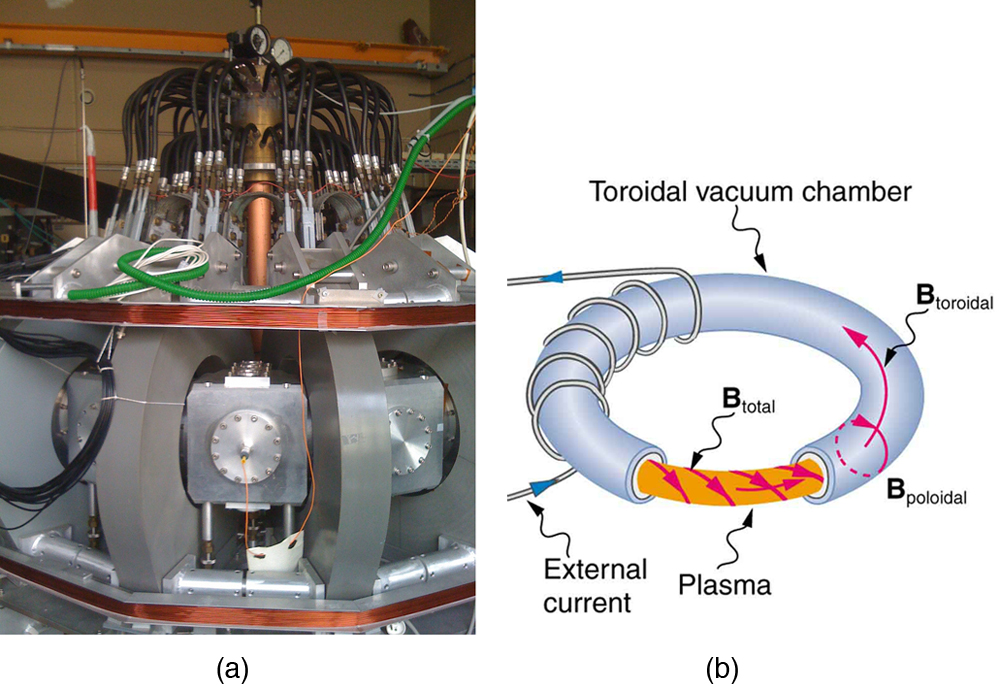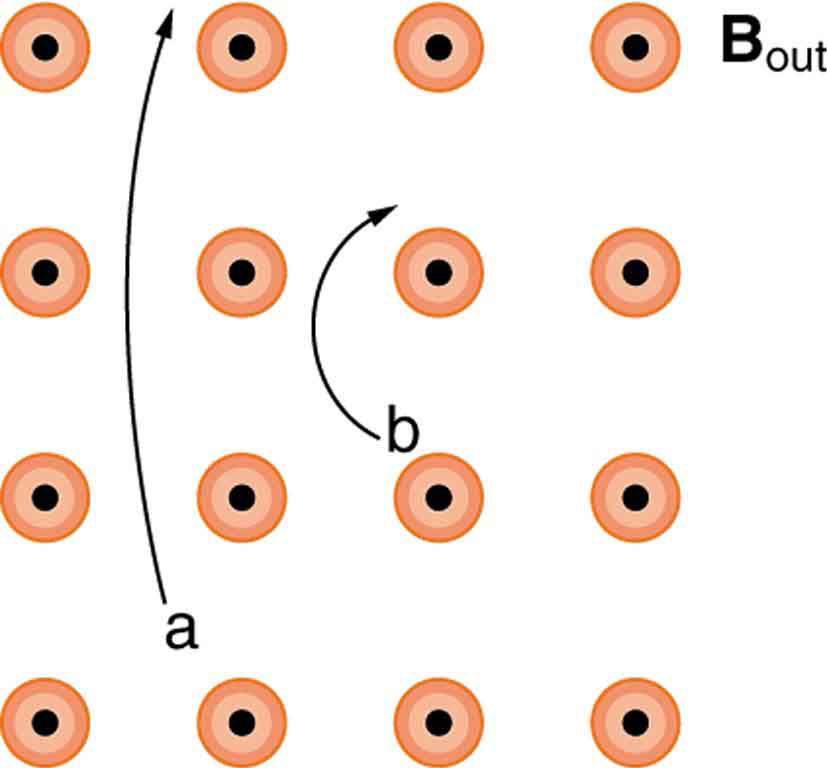| << Chapter < Page | Chapter >> Page > |

Thermonuclear fusion (like that occurring in the Sun) is a hope for a future clean energy source. One of the most promising devices is the tokamak , which uses magnetic fields to contain (or trap) and direct the reactive charged particles. (See [link] .) Less exotic, but more immediately practical, amplifiers in microwave ovens use a magnetic field to contain oscillating electrons. These oscillating electrons generate the microwaves sent into the oven.

Mass spectrometers have a variety of designs, and many use magnetic fields to measure mass. The curvature of a charged particle’s path in the field is related to its mass and is measured to obtain mass information. (See More Applications of Magnetism .) Historically, such techniques were employed in the first direct observations of electron charge and mass. Today, mass spectrometers (sometimes coupled with gas chromatographs) are used to determine the make-up and sequencing of large biological molecules.
How can the motion of a charged particle be used to distinguish between a magnetic and an electric field?
High-velocity charged particles can damage biological cells and are a component of radiation exposure in a variety of locations ranging from research facilities to natural background. Describe how you could use a magnetic field to shield yourself.
If a cosmic ray proton approaches the Earth from outer space along a line toward the center of the Earth that lies in the plane of the equator, in what direction will it be deflected by the Earth’s magnetic field? What about an electron? A neutron?
What are the signs of the charges on the particles in [link] ?

Which of the particles in [link] has the greatest velocity, assuming they have identical charges and masses?

Which of the particles in [link] has the greatest mass, assuming all have identical charges and velocities?
While operating, a high-precision TV monitor is placed on its side during maintenance. The image on the monitor changes color and blurs slightly. Discuss the possible relation of these effects to the Earth’s magnetic field.
If you need additional support for these problems, see More Applications of Magnetism .

Notification Switch
Would you like to follow the 'General physics ii phy2202ca' conversation and receive update notifications?